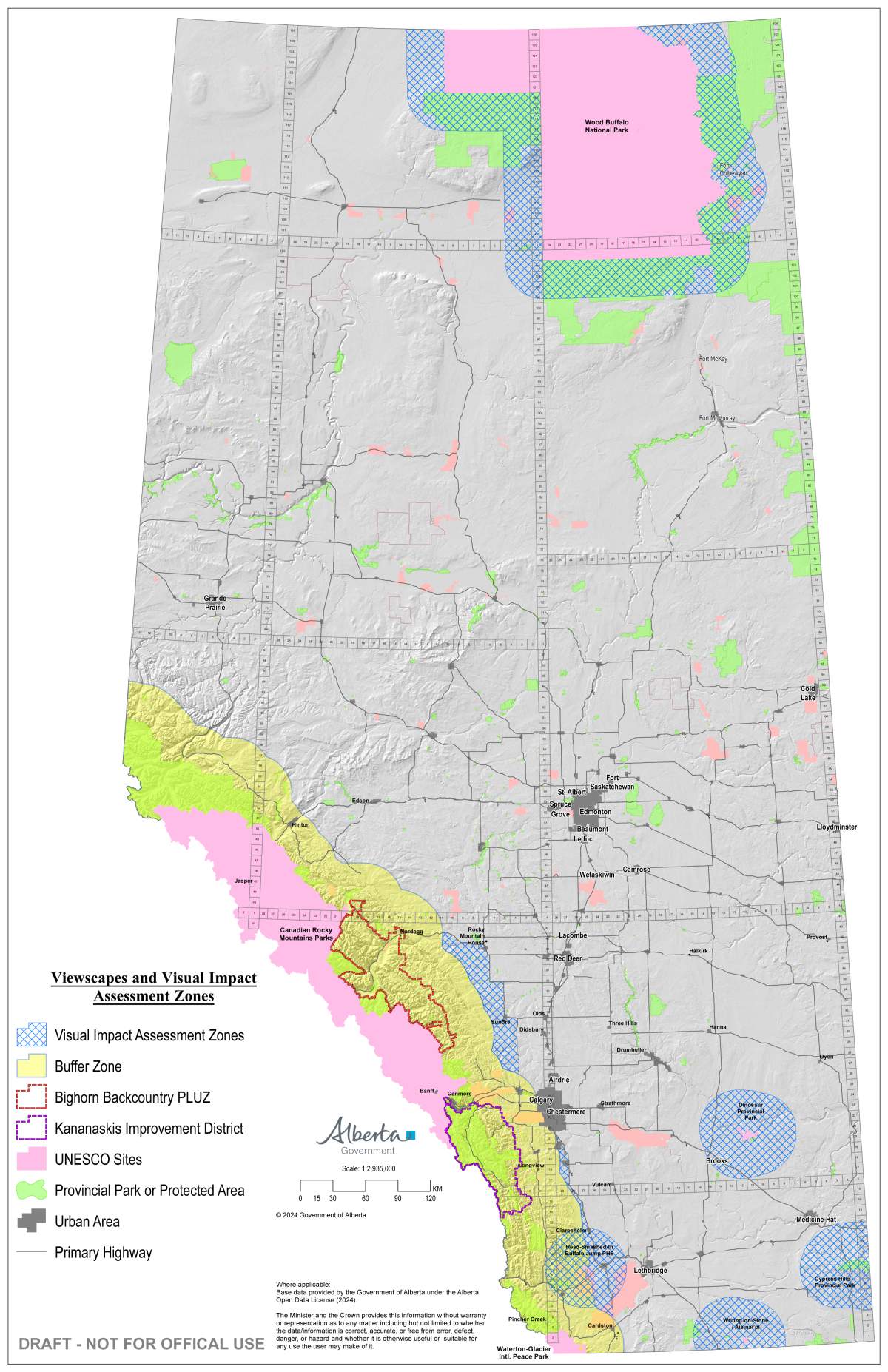The Alberta government has released some details of where and how it will permit wind and solar development, prohibiting it along a broad stretch of the province’s western edge, assessing its visual impact in five other large areas and restricting it on agricultural land.

“Wind projects are no longer permitted in the buffer zones due to the impact of their vertical footprint,” said Affordability and Utilities ministry spokeswoman Ashley Stevenson. “With agricultural lands, development is still permitted as long as the project can coexist with livestock or crops.”
The new restrictions will only apply to renewable energy development.
The no-go zone, according to a map released late Thursday, includes the entire length of the Rocky Mountains, stretching as far east as Calgary and Highway 2 in the south.
There are large zones around the Cypress Hills, Dinosaur Provincial Park, Writing-On-Stone Provincial Park, Head-Smashed-In Buffalo Jump and a stretch of foothills south of Rocky Mountain House where such projects will be subject to visual impact reviews — a process that remains undefined.
The map, together with the agricultural restrictions, will affect 57 projects worth $14 billion, said Jason Wang, an analyst at the Pembina Institute, a clean energy think-tank.

Get daily National news
He said 35 projects are captured by the agriculture limitations. Another 22 will either be subject to a visual impact assessment or are in a no-go zone.
“That area, where these existing projects are, that’s where Alberta’s best wind resources are,” he said. “Those projects are now in the no-go zone.”
A report from the Alberta Utilities Commission on renewables development, requested by the United Conservative government, acknowledged the need to consider the visual impact of solar and wind development. But it said such considerations should be applied equally.
“The commission suggests that should the government find it in the public interest to pursue ‘no-go’ restricted viewscape zones, any prohibition on development intended to achieve viewscape preservation be industry agnostic and apply equally to all forms of development.”
Evan Wilson of the Canadian Renewable Energy Association wonders why the rules only apply to that industry.
“Why is this something that is just impacting wind and solar?”
Within the restricted zones are hundreds of oil and gas facilities. One open-pit coal mine in the Rockies is before the provincial regulator and the expansion of another has already been approved. Much of the area has been extensively logged.
Wilson said the new map isn’t as restrictive as some feared it would be
“There is a significantly smaller portion of the province that is impacted by this map,” he said. “But it leads to a lot more questions.”
Developers still need to know what the next steps are and how they can mitigate concerns, he said. Nobody has explained how the lines on the map were drawn. Nobody, in a province dotted with pumpjacks and compressor stations, has outlined when human activity is part of the landscape and when it’s a visual impact.
“What we are seeking is clarity on what a pristine viewscape is,” said Wilson.
Maybe, he suggests, the definition is bigger than many think.
“There is something quite powerful about a view where you can see all of the different types of energy in Alberta coexisting with Alberta’s beauty behind,” he said. “To see a pumpjack, a wind turbine, a solar panel and the mountains is a truly Albertan vista.”











Comments